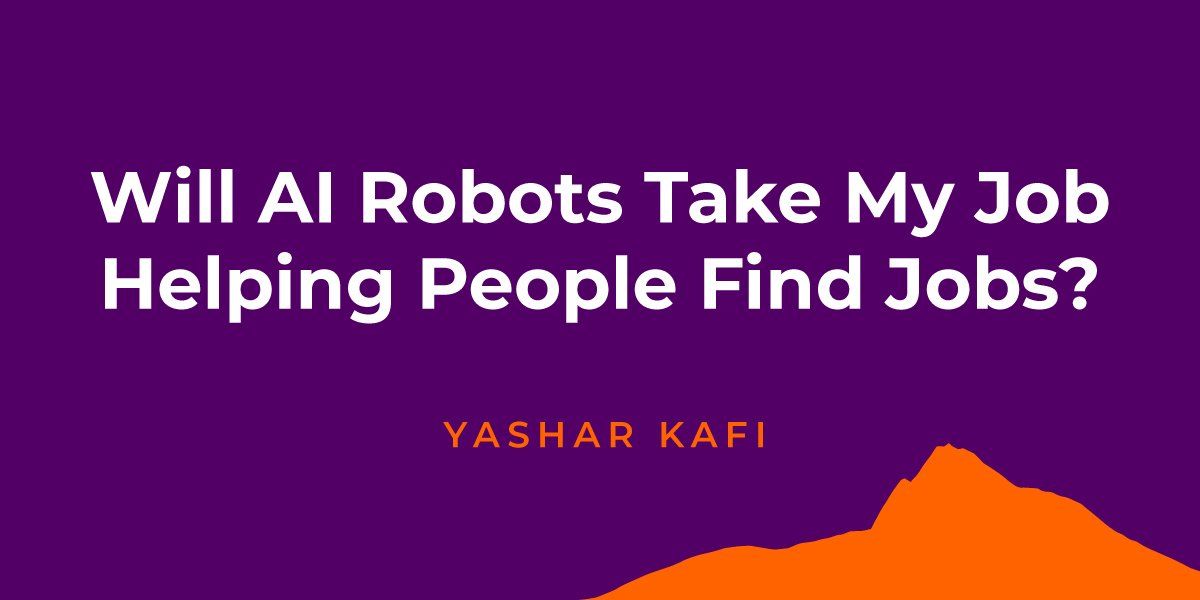Will AI Robots Take My Job Helping People Find Jobs?
The truth is that we live in a fast-food society. What I mean by that is that we are constantly looking for the fastest, easiest, most efficient ways to do things. We want something done, and we want it now. This is particularly the case for mundane tasks, which we are always looking to complete in a faster, easier manner.
Our latest advancement toward this aim is automation, and it’s sending people into a bit of a frenzy. Amid an ongoing pandemic, and with uncertainty seeming to swirl all around us, fear and panic—especially when thinking of finances and job security—can easily creep in and take root.
Not helping matters is that every week there seems to be a new study or article about the apocalyptic potential of robots and AI to swoop in and eliminate the need for you and me.
If you are worried about the future of your employment as the wheels of automation roll on in full force, you are not alone. According to one article, 37% of workers are worried about losing their jobs due to automation.
But, how realistic is this fear? Will robots really take our jobs? The answer to this question is yes, and no. And just like that silly relationship status posting, my answer can best be summed up as: It’s complicated. Allow me to explain…
While advancements in technology have already taken over 90% of the work humans used to do, we haven’t actually lost 90% of our jobs. Why? The reason for this is that instead of rendering us unemployed, new roles have been created in their wake. These new roles exist for one simple reason: Even with advanced automation technology and AI, real people are still needed for many reasons.
People Need People, and So Does AI
Even though low-skilled work is pretty easy to automate—jobs where most responsibilities are repetitive, monotonous tasks—it will likely be replaced by robots eventually. But there is a vast network of other jobs that are here to stay.
Why? The demand for distinctly human skills and abilities (think: creativity, emotional intelligence, and even agility) is still strong, as these are still necessities for keeping things humming along seamlessly. It’s undeniable that AI has limitations, the most glaring of which is that robots and AI are not only created by—but also controlled by—humans. At least for now, this technology, while it may be automated, is not autonomous.
Whew…
Also worthy of note is that no technology, no matter how advanced, has been able to match the complexity of the human brain. This means that jobs requiring critical thinking, problem-solving, and navigating appropriate social and emotional interaction among clientele (which is still demanded and needed), must have humans at the helm.
Let’s use my job as a consultant as an example. Will AI robots take my job? I’m going to say no. The main reason for this is that consulting is a delicate and nuanced occupation requiring an arsenal of fine-tuned interpersonal skills and finesse. Similarly, the healthcare industry (nurses and doctors), counselors, and social workers are also careers that are heavily reliant on human interaction. While some portions of each of these jobs may be taken over by automation, it’s hard to imagine a world where patients can be adequately assessed by a bot, especially one with zero bedside manner. No thanks.
The Glass is Half Full
I also want to mention the silver lining to automation. On the plus side, while robots and AI are sure to replace mundane, repetitive, and even dangerous functions, this amazing technology will also keep paving the way to unprecedented innovation, greater efficiency, and open the door to many more opportunities.
As you face this new automated frontier in 2021 and beyond, AMPlify is here to help.
Contact us today to discuss what we can do for you.




